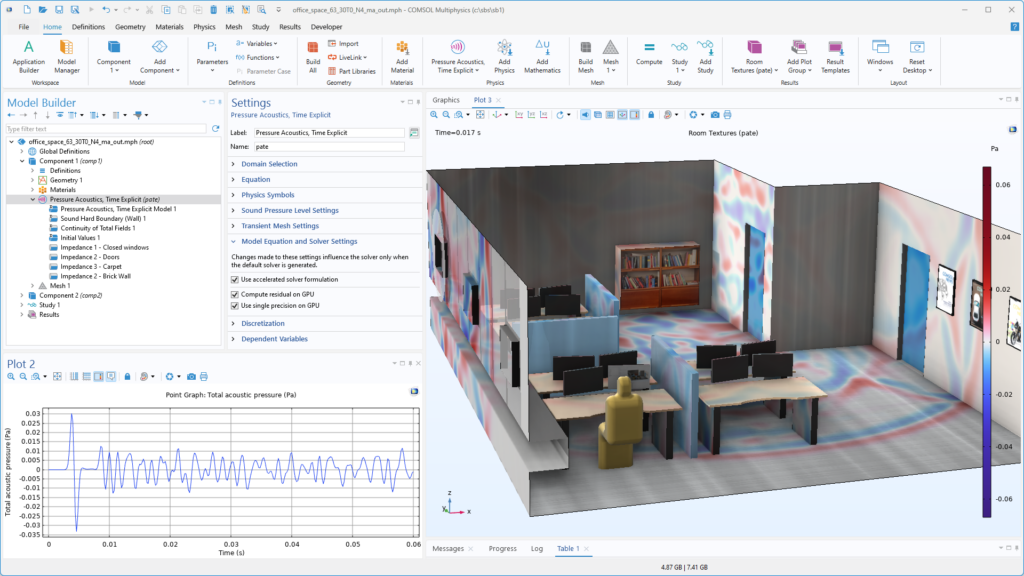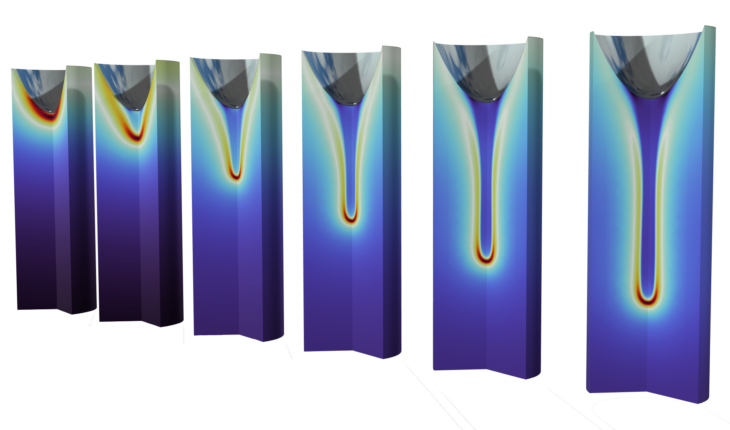The latest version of the multiphysics simulation software introduces the Electric Discharge Module.
BURLINGTON, MA, Nov 20, 2024 – COMSOL announced the release of COMSOL Multiphysics version 6.3, which delivers new features and capability updates for efficient physics modeling and simulation app development. The new version includes automated geometry preparation tools, GPU support for accelerated acoustics simulation and surrogate model training, a new Electric Discharge Module, and an interactive Java environment, to name a few.

The new automated geometry preparation tools streamline model development by removing unnecessary details and defects in CAD models, resulting in higher-quality meshes for enhanced simulation reliability. Users can thereby import larger industrial CAD models, which originally were not meant for simulation, and use the automated geometry preparation tools to make the necessary adjustments for robust simulations. The interactive Java environment allows for on-the-fly model modifications using the COMSOL API. Additionally, a chatbot tool is available to assist with Java coding and answer general queries.
Up to 25x Faster Transient Acoustics Simulations
The Acoustics Module now offers GPU support for up to 25x faster simulations of pressure acoustics in the time domain, along with new capabilities for poroacoustics, including support for modeling anisotropic materials and frequency-dependent material properties in the time domain.
“The new GPU support for transient acoustic simulations is invaluable for engineers working on automotive sound systems or optimizing acoustics in office and residential spaces,” said Mads J. Herring Jensen, development manager at COMSOL. “Being able to produce acoustics simulations much faster will help our users to ultimately develop new design iterations and product innovations more quickly as well.”

Detailed Electric Discharge and Breakdown Simulations
The release of COMSOL Multiphysics version 6.3 also introduces the Electric Discharge Module, which offers powerful simulation capabilities spanning a wide range of electric discharge scenarios, including atmospheric pressure gas discharges, breakdown phenomena in liquids like transformer oil, and solid materials like insulating polymers.
“The Electric Discharge Module makes new modeling capabilities available that aid in the design of anything from consumer electronics to high-voltage systems,” said Lipeng Liu, technical product manager at COMSOL. “Electric discharge simulation has been a high priority for us, and it is rewarding to see COMSOL’s multiphysics strengths come together in this product. Discharge phenomena involve multiple physics and are really suited for the full potential of COMSOL’s modeling tools.”
News Across the Product Suite
Additional highlights of COMSOL Multiphysics version 6.3 include:
- Efficient data sampling for surrogate model creation
- Electromechanical modeling for thin structures, tools for moisture-induced swelling, and simplified workflows for spot welds and fasteners
- More accurate electrostatic force calculations for MEMS devices, efficient modeling of laminated iron in motors and transformers, and easier modeling of periodic structures in wave optics
- Incorporation of Reynolds-stress turbulence models, non-Newtonian flow in porous media, and fast drying simulations with nonequilibrium moisture transport
- Precipitation and crystallization simulation for particle nucleation and growth with particle size distribution
To get an in-depth look at the latest version, browse the release highlights.
Available Now
COMSOL Multiphysics, COMSOL Server, and COMSOL Compiler software products are supported on the following operating systems: Windows, Linux, and macOS.
For more information, visit comsol.com.





